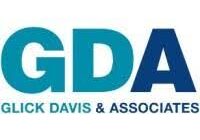Mergers and acquisitions (M&A) are powerful tools for growth, transformation, and competitive advantage—but they’re rarely smooth sailing. Despite careful planning, many deals underperform or fail altogether due to common post-transaction hurdles. Understanding these pitfalls is critical for organizations to protect value and successfully integrate businesses.
In this article, we’ll explore the three most common challenges in mergers and acquisitions and provide strategies to help your organization overcome them.
1. Cultural Clashes
Business culture misalignment is consistently cited as the #1 reason M&A deals fail. While financials and operations may align on paper, the human element—values, behaviors, leadership styles, and communication norms—often collides during integration.
Why It Happens:
-
Different leadership approaches or decision-making styles
-
Contrasting workplace expectations and communication habits
-
Resistance to change from employees accustomed to “how things were”
The Impact:
-
Employee dissatisfaction and confusion
-
Misalignment of goals and priorities
-
Drops in productivity and morale
How to Address It:
-
Conduct cultural due diligence as rigorously as financial analysis
-
Develop a cultural integration plan that includes workshops, surveys, and feedback loops
-
Communicate early and often to align values, goals, and expectations
Pro Tip: Assign cultural ambassadors or change champions within both organizations to help bridge gaps and advocate for shared values.
2. Failure to Achieve Expected Synergies
Many M&A deals are justified by the potential for cost savings, increased market share, or operational efficiencies. However, these “synergies” often fail to materialize—or fall far short of expectations.
Why It Happens:
-
Overestimated savings during due diligence
-
Integration delays or poor execution
-
Inadequate technology or process alignment
The Impact:
-
Stakeholder disappointment
-
Weakened post-merger financial performance
-
Difficulty achieving long-term strategic goals
How to Address It:
-
Set realistic synergy targets backed by conservative modeling
-
Create a detailed integration roadmap with clear owners, timelines, and KPIs
-
Track synergy realization metrics regularly and adjust as needed
Pro Tip: Consider a phased integration approach, focusing on high-value synergy areas first to build early momentum and confidence.
3. Loss of Key Talent and Staff Retention Issues
Uncertainty is a breeding ground for fear—and during M&A, employees often feel vulnerable. Concerns about layoffs, leadership changes, or shifting priorities can cause top performers to leave just when they’re needed most.
Why It Happens:
-
Lack of transparent communication
-
Perceived or real threats to job security
-
Poor handling of employee transitions
The Impact:
-
Loss of institutional knowledge
-
Business disruption during a critical period
-
Increased recruitment and onboarding costs
How to Address It:
-
Identify critical talent early and offer retention bonuses or career path clarity
-
Provide frequent updates through leadership messaging, town halls, and one-on-ones
-
Involve employees in the transition process to increase buy-in and reduce fear
Pro Tip: Use engagement surveys and pulse checks throughout the process to stay ahead of brewing issues.
Conclusion: Proactive Planning Is Key to M&A Success
Cultural clashes, missed synergies, and talent loss are three of the most persistent and damaging challenges in mergers and acquisitions. But they are not inevitable. With proactive planning, structured communication, and people-centered integration, organizations can minimize risk and maximize the long-term value of their deals.
Whether you’re preparing for an acquisition or navigating a recent merger, keeping these issues top of mind will improve your odds of success.
Partnerships & Mergers Can be Challenging, But We Can Help.
Frequently Asked Questions
Cultural misalignment is often cited as the primary reason M&A transactions underperform or collapse.
Nonprofit Turnaround: A Guide for Nonprofit Leaders, Consultants and Funders

